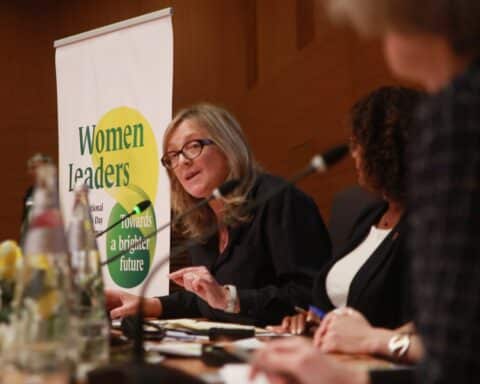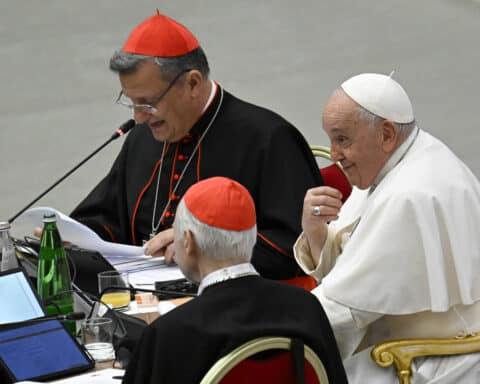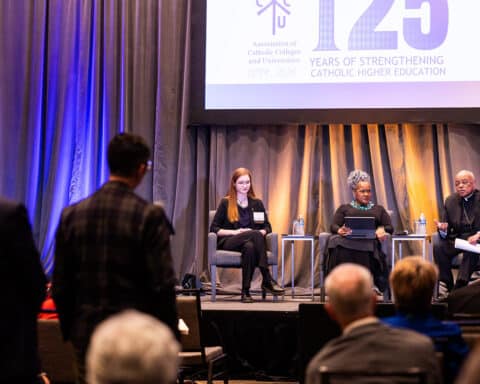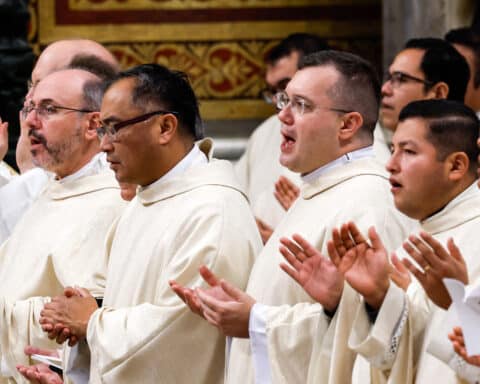The Vatican has released significant details of a major South American bishops’ meeting scheduled for October of this year, raising concerns over several issues relating to doctrine, discipline and practice that could have serious implications for the Church far outside the Amazonia region for which Pope Francis has called the meeting.
Titled “Amazonia: New Paths for the Church and for an Integral Ecology,” the document is long, even for similar Church documents, which are not exactly known for brevity or conciseness. The first part lays out a summary view of the state of affairs in the Amazon region, which is a vitally important area of the world, whether viewed from an ecological, economic, political or social point of view. The second part seeks to bring into focus more closely the concerns of the land and the people who live in it. The third part is directly more ecclesial and practical.
The ecclesial issues on the agenda have garnered the most attention in the worldwide press, both Catholic and secular, especially a controversial proposal to introduce married men to the priesthood in the Latin rite of the Church. Paragraph 129 of the document reads, in part:
“Affirming that celibacy is a gift for the Church, it is requested that, for the most remote areas of the region, the possibility of priestly ordination be studied for elderly people, preferably indigenous, respected and accepted by their community, even if they already have a constituted and stable family, in order to ensure the sacraments that accompany and sustain the Christian life.”
Citing Acts 6:1-7 and 1 Timothy 3:1-13, the document says the proposals advanced in Paragraph 129 come from local communities themselves, and seek to recover “aspects of the early Church, when it responded to [people’s] needs by creating appropriate ministries.”
The document calls for promoting “autochthonous vocations for men and women in response to the needs of pastoral-sacramental care,” which responds to “the impulse to an authentic evangelization from the indigenous perspective, according to its uses and customs.” The writers say they want “indigenous people who preach to indigenous people from a deep knowledge of their culture and their language, capable of communicating the message of the Gospel with the strength and effectiveness of those who have their cultural baggage.”
Proposal
The proposal, while certainly controversial and potentially seismic, is nothing new. On the contrary, it is at once very old and very current. In apostolic times, through the first millennium, married men received priestly ordination. In some places, there were married bishops. The history of the question is rich, complex and endlessly fascinating. In short, the practice eventually proved more trouble than it was worth, so a new universal discipline was imposed and eventually came to be regularly and effectively enforced.
As often happens, theological justifications followed practical realities. That is not a mark against the validity of those justifications; it’s just the way things go. The upshot, once again, is that however cogent and compelling one finds the arguments in favor of a celibate priesthood, the matter is disciplinary, rather than doctrinal. Married men are priests in all the ritual Churches in communion with Rome except the one that is by far the largest: the Latin Rite — and even there, the rule is not exceptionless.
Calls for opening the priesthood to married men of “proven virtue” — viri probati in technical parlance — in recent years have focused in the developed world on stemming the tide of clergy sexual abuse. Data consistently shows, however, that most sexual abuse of minors occurs in family settings, and that most perpetrators are in fact married men.
Another line of argument says that ordaining viri probati could have a salutary effect on clerical culture. Introducing experienced and independent men of formed mind and settled habits could serve as leaven within the ranks of a clerical body too often dependent upon the Church for a living and unused to resisting episcopal malfeasance.
Against this, it is urged that a radical change in practice at a critical time — which only hopes to obliquely address a core issue and comes not so much with a series of unknowns as a series of downsides that the Church in the West has already in the main rejected as not worth the trouble — is unwise.
It is also worth considering that, without likewise opening the ranks of the episcopate to married men, the move could have the exact opposite of its desired effect: Basically, it would mean that bishops would be drawn either from the religious orders, or from the ranks of the secular (diocesan) clergy, who were not married. This would mean creating a class system within the clerical body, which would drive the most ambitious and least inclined to marriage toward the seats of power in the Church.
Urgent need for priests
In any case, the reasons offered by the document appear very different. Most urgent is the raw need for priests. People in Amazonia can go months, even years, without a Mass. They don’t see a priest. Sins are not absolved. People die without the sacraments only a priest can offer. That is a problem — a set of problems, really — worth separate and full consideration. That is what the synod fathers plan to give them in October.
The framing of the issue has made more news than the actual conversation, which everyone already knew would somehow be on the agenda. Words like “preferably” might sound limiting in the ears of people unused to bureau-speak, but really they set in relief the fact that there is no strict requirement — nor could there be, as the priesthood is neither a civil right nor an ethnic privilege — though the historical under-representation of indigenous peoples among the ranks of the South American clergy is something with which the Church has long failed to reckon.
Pope Francis’ take
When it comes to the question of ordaining viri probati, Pope Francis has been cagey. He has said he is personally opposed to such a development, but willing to give the bishops and faithful of remote and underserved regions a hearing on the question. “I think that celibacy is a gift to the Church,” Francis said during a press conference en route to Rome from Panama earlier this year. “I would say that I do not agree with permitting optional celibacy, no,” he added.
That sounds like a pretty clear kibosh on the whole thing. “There remains,” Pope Francis continued, “only some possibility for very far-away places.” He gave the example of the Pacific Islands, but the work was done. “[W]hen there is a pastoral necessity,” he went on to say, “the pastor should think of the faithful.”
“If the bishops agreed through mutual consent to ordain married men,” the former president of the Pontifical Council for Promoting Christian Unity, Cardinal Walter Kasper, recently told the newspaper Frankfurter Rundschau, “it is my judgement that the pope would accept it.” Basically, no matter where analysts and commentators fall on the spectrum of opinion in the Church, almost no one is taking seriously the idea that this is a limited or exceptional proposal. Sure, it starts out that way, but once the lid is up, there’s no closing it.
Christopher Altieri writes from Rome.
| Bulletin on Amazonia |
|---|
|
When the Synod of Bishops gather in October to reflect on the theme, “New Paths for the Church and for an Integral Ecology,” discussion will focus on the “People of God who live in this region: inhabitants of communities and rural areas, of cities and large metropolises, people who live on river banks, migrants and displaced persons, and especially for and with indigenous peoples,” the preparatory document says. It adds, “The Special Synod’s reflections transcend the strictly ecclesial-Amazonian sphere, because they focus on the universal Church, as well as on the future of the entire planet. We begin with a specific geographical area in order to build a bridge to the other important biomes of our world: the Congo basin, the Mesoamerican Biological Corridor, the tropical forests of the Asia Pacific region, and the Guarani Aquifer, among others.” The synod will consider the following questions: “How do you imagine your ‘serene future’ and the ‘good life’ of future generations? How can we work together toward the construction of a world which breaks with structures that take life and with colonizing mentalities, in order to build networks of solidarity and inter-culturality? And, above all, what is the Church’s particular mission today in the face of this reality?” |





